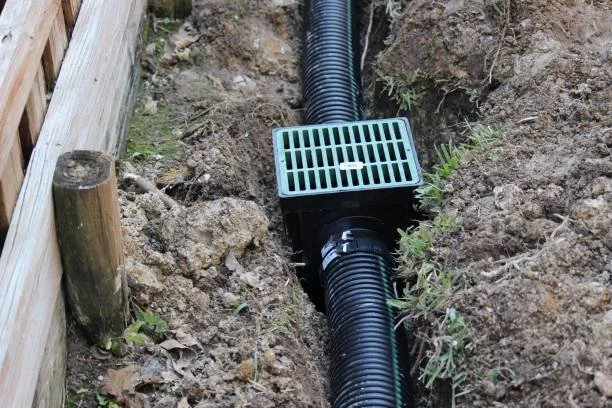The Ultimate Guide to a Stunning Bathroom Renovation
RH Business Marketing Solutions
A bathroom renovation is an exciting project for homeowners looking to improve their space, functionality, and overall appeal. The bathroom is an essential part of any home, so it's vital to ensure it is one you can truly enjoy and feel comfortable in. With the right approach and excellent ideas, you can transform your bathroom from drab to fab in no time. In this ultimate guide, we will explore various small bathroom renovation and design trends perfect for your home. Prepare to be inspired by cost-effective solutions, DIY projects, innovative storage solutions, and gorgeous design ideas.
1. Assessing Your Bathroom Renovation Needs
Before diving into your bathroom remodel, it's crucial to take a step back and assess your current bathroom situation. Ask yourself what works and what doesn't in your current space. Are you satisfied with the layout Is there enough storage Is the lighting adequate Take a close look at your bathroom to identify areas that need improvement. This assessment will help you create a clear bathroom renovation road map and set realistic goals for your makeover.
2. Setting a Budget for Your Bathroom Remodel
Bathroom makeovers can be costly, but they don't have to be. It's essential to establish a budget early on to help you make informed decisions when it comes to materials, fixtures, and labor. To set a realistic budget, research costs for various bathroom updates and obtain quotes from contractors if needed. Bathroom remodel costs can vary significantly based on factors such as your location, the extent of the makeover, and the quality of materials used.
3. Small Bathroom Makeovers Maximizing Space
If you have a small bathroom, there are plenty of ways to optimize space and create a functional and beautiful room. One proven method is to use light colors on the walls and floor to create an illusion of more space. Installing a large mirror can also help reflect natural light and open up the room. Efficiently utilizing vertical space through wall-mounted storage and floating vanities can also help maximize your small bathroom's potential.
4. Bathroom Renovation Ideas and Design Trends
Stay up-to-date with the latest bathroom design trends to ensure your makeover feels fresh and modern. Modern and minimalist designs, such as open-concept showers and freestanding bathtubs, are gaining popularity. Bold tile choices, unique lighting fixtures, and statement pieces of art are also notable trends in bathroom design. Remember, though, that trends come and go, so make sure to select elements that you genuinely love and that stand the test of time.
5. Choosing the Right Bathroom Fixtures and Accessories
The right bathroom fixtures and accessories can make or break your bathroom makeover. Choose faucets, showerheads, and accessories that complement your overall design aesthetic and are of high quality. Consider energy-efficient options, such as low-flow showerheads and faucets, as they can help lower your water bills in the long run. Additionally, don't forget to select matching towel bars, hooks, and toilet paper holders, as these small details can significantly impact your bathroom's overall appearance.
6. Creative Storage Solutions and Organization Tips
Proper storage is essential in maintaining a visually appealing and functional bathroom. Innovative storage solutions, such as built-in niches, floating shelves, and ladder shelving units, can provide ample storage space without compromising the room's design. Organize your bathroom items using clear, labeled containers and baskets to maintain order and make items easy to find.
7. DIY Bathroom Renovation Projects
Many homeowners embrace bathroom remodel as a DIY project to save money and add a personal touch. Some popular DIY bathroom makeover ideas include painting or retiling a bathroom, installing new bathroom fixtures, and upgrading existing storage solutions. If you have the skills and tools needed, DIY bathroom makeovers can be a rewarding and cost-effective way to transform your space. However, it's essential to know your limits and call-in professionals when necessary.
8. Hiring Professionals vs. DIY Remodel
Although a DIY bathroom remodel can save you money, there are instances when hiring professionals is the better option. For example, specialized tasks such as plumbing and electrical work are generally best left to licensed experts. Additionally, hiring a professional contractor may result in a faster completion time and higher-quality work compared to a DIY remodel. Carefully weigh the pros and cons of each approach before deciding the best route for your bathroom makeover.
9. Creating a Bathroom Makeover Plan
After assessing your bathroom needs, establishing a budget, and considering various design elements, it's time to develop a comprehensive bathroom makeover plan. Create a detailed outline, including a project timeline and necessary materials, tools, and labor. Ensure all decisions align with your budget and overall vision for the bathroom remodel. A well-thought-out plan will help ensure the success of your bathroom makeover and reduce the chances of costly mistakes.
10. Ensuring the Success of Your Bathroom Makeover
Your bathroom makeover project's success depends on careful planning and execution, a clear vision, and the right materials and professionals. To ensure your bathroom remodel is victorious, keep the following tips in mind.
Be adaptable and open to change when unexpected obstacles arise.
Communicate effectively with any professionals involved in the project.
Keep your project organized and on schedule.
Regularly evaluate your progress to ensure you're staying on track and within budget.
In Conclusion A bathroom renovation should reflect your personal style and needs. With a clear plan and the right materials and professionals by your side, you can create the bathroom of your dreams. Follow this ultimate guide to a stunning bathroom renovation to help you envision, plan, and execute the perfect bathroom remodel for your home. So, go ahead and get started on creating the sanctuary you've always wanted!
Guest Contributor: Joseph Webb


























